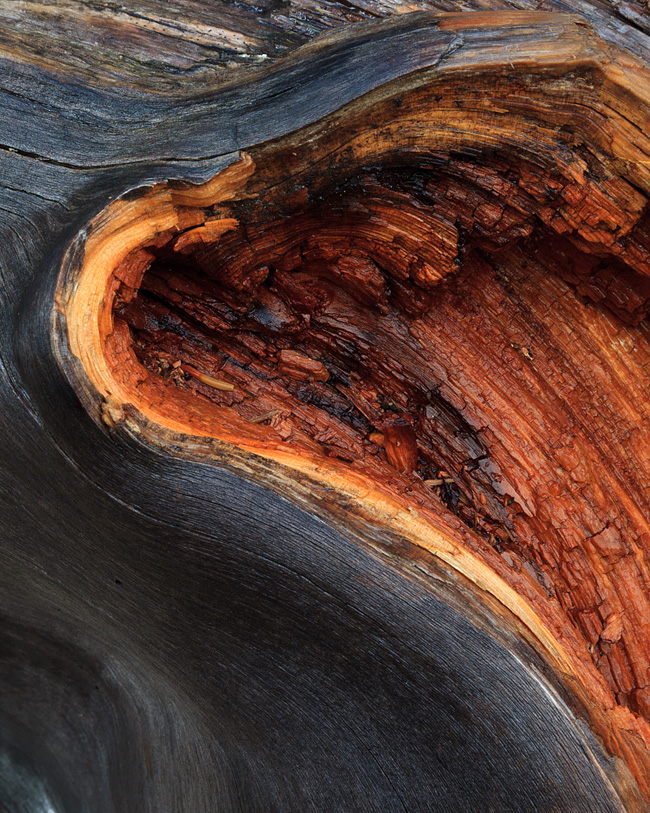When it comes to landscape photography, a series of key elements need to be taken into account. All these elements have to be combined in perfect harmony, for it is only then that an image can capture the viewer’s imagination. However, when it comes to intimate landscape photography, two of these elements are vital: patience and persistence.
In September, 2011, after a very successful morning photographing Moraine Lake in the Canadian Rockies, I was strolling along the water line. Inside the National Parks, no-one is allowed to interfere with fallen trees, hence there is a plethora of tree trunks all around the lake, some displaying the most extraordinary shapes and colours.
I came across one and I knew immediately that there was a beautiful image to be made. First of all though, I had to spend enough time to find exactly what would work and how I should best compose it. With my viewfinder card in hand, I must have spent at least thirty minutes looking at a particular part of the trunk: people around me must have thought I was insane, but this doesn’t bother me in the least. I wanted to find the best angle and I was determined to do so.
When I am trying to find a certain composition to do a subject justice, I usually let my imagination run wild. In this case I could see half of a “bleeding heart”. The most important part here was to get the composition right. After carefully adding all technical elements such as focusing, exposure and so on, I was ready to capture the image, but two problems still had to be overcome: direct sunlight and a dry surface. As I was next to the water, the latter was easy. My light jacket was used to shade the area from the direct sunlight and a circular polarising filter did an amazing job taking away all reflections from the wet surface to reveal its vibrant colours. Finally, as a compromise, I had to use an aperture of f/22, the only way to get the far end of the log in focus.
If you look carefully, you will see a wood worm that came out as soon as the surface got wet.


2 Comments
Nice tones and textures here. It would be interesting to see if it also works in monochrome…;0)
Hi Peter
Thank you very much for your comment. It doesn’t work well in mono. As the image lacks variety of tones, it looks a bit flat when converted to monochrom.